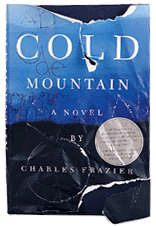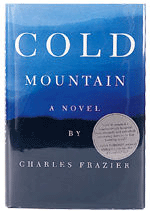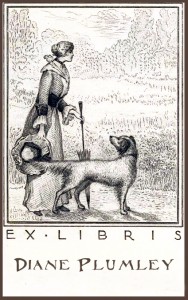 Coming from a smaller venue where the books were mostly paperbacks and the space limited, to being seated behind a huge desk in a beautifully appointed room was a little bit of a jolt. The amount of employees was tripled, with two floors of stock, a shipping department, and rare expensive titles in an unlocked case. It all boggled the mind. Add an office, personal assistant, accountant, and large personal library filled with the most rare and expensive volumes in crime fiction, and you either have a nervous breakdown, or are in heaven. I chose heaven, at least for a period of time.
Coming from a smaller venue where the books were mostly paperbacks and the space limited, to being seated behind a huge desk in a beautifully appointed room was a little bit of a jolt. The amount of employees was tripled, with two floors of stock, a shipping department, and rare expensive titles in an unlocked case. It all boggled the mind. Add an office, personal assistant, accountant, and large personal library filled with the most rare and expensive volumes in crime fiction, and you either have a nervous breakdown, or are in heaven. I chose heaven, at least for a period of time.
The upper floor on which I worked was lined with built in shelves. Lovely to look at, and fantastically practical, one reached the top books by a sliding ladder. Customers were allowed, even encouraged to climb and explore. The volumes on the shelves were predominately old titles, usually first editions, and many in dust jackets. This was a room for readers, but mostly for collectors, those who read their books in paperback, and collect in first edition hardcovers. I learned the first day, there is an art and science to shelving such books. The golden rule, never ever, let me repeat, never ever force a volume into a slot you think will fit. It doesn’t fit, if forced. Ample space is required, easy entry and exit with no need to pull, yank or otherwise manhandle the merchandise. Less amount of product may grace the shelves, but that product will remain sellable.
When removing a volume, don’t pull from the top and jerk it down or grab from the middle of the spine trying to release the entire book at once. What I remember being taught, and this is perhaps a bit fuzzy, but It’s what I’ve done since and never harmed a book, is lightly tip the top of the spine down. When it is slanted, then again, lightly grasp the volume near the top and slide carefully out of the spot. This way the book is apart from its companions, but not fully, and the stress isn’t on one particular area of the book, certainly not on the delicate top spine where if one put pressure on and yanked it free, the top of the spine would probably split, destroying some of the book’s value.
If the book is older and somewhat valuable, it should have a brodart on it. A brodart you ask? It’s the name of the company who makes transparent mylar book jacket covers. The same way we call paper copies Xerox’s and facial tissues, Kleenex’s. I’ve never heard them called anything else. And putting that brodart on a delicate chipped, split, frayed dust jacket, is no picnic.
on it. A brodart you ask? It’s the name of the company who makes transparent mylar book jacket covers. The same way we call paper copies Xerox’s and facial tissues, Kleenex’s. I’ve never heard them called anything else. And putting that brodart on a delicate chipped, split, frayed dust jacket, is no picnic.
There are a couple of sizes, but we dealt in one size–whatever size fit most books then and now. Your job is to fit it closely to the jacket, but not so close that over time the mylar tightens and the jacket becomes scrunched within. And I didn’t always make the grade, from the results some 15 years later, lol. A couple of my own books show shrinkage, although not enough to lower value. The perfect fit should allow the jacket to slide in and out easily, but not be swimming in it either. You lay the mylar flat. Open the paper part and either lay or slide the delicate dust jacket onto the transparent mylar, face down. Once within the mylar, with as equal space on either side of the flaps and the bottom edge lined closely to the bottom of the mylar, you then fold the paper over the dust jacket and crease the mylar down where the top of the jacket ends. The mylar flaps are creased exactly where the dust jacket flaps already are creased. Once finished, some use archival tape to keep the mylar against the paper. I don’t. I’ve seen too many accidents where the tape sticks to the jacket as it’s being removed.
 Having mylar on new or old jackets helps with the removal process from the shelf. They slide easier, and tipping the spine down has less risk if backed with mylar and paper.
Having mylar on new or old jackets helps with the removal process from the shelf. They slide easier, and tipping the spine down has less risk if backed with mylar and paper.
I’m not an expert by any means on evaluating condition and monetary value of a older book, but I do know certain facts.
1. Book clubs are worthless. To tell a book club from a first edition, usually the jacket has no price. However, if price clipped, it may be difficult to determine. Almost always, book clubs are smaller than the published edition. And there may be an impression of some sort at the bottom of the back board. Also, on the copyright page, sometimes the book club is identified. And most easily, many bookclubs announce themselves right on the jacket flap. Be careful to not be fooled by a price clipped book club into thinking someone gave the book as a gift and clipped the price off, as often happens with a published first.
2. Ex-library are close to worthless, but if no other copy of a book can be located, such as my The Plumley Inheritance, a market is created and therefore it’s worth something. This is rarely the case. Ex-library books can have pockets, stampings, pencil writing, and various other defects indicating where it came from. Usually, an ex-library jacket is encased in mylar, virtually frozen within. Glued to the paper backing, it can be impossible to remove. Many library editions were also clipped to fit a mylar, which destroys the value of the jacket too. If you are looking for a first edition of a particular book, and you find one, but it’s ex-library, keep looking. Otherwise you will be purchasing it for reading only, and not collecting and possible value.
3. If in doubt of what indicates a first edition for a particular publisher, don’t guess or hope your memory is correct. Consult the little blue green book. That’s how I remember the thing! Its real title is, The Pocket Guide to the Identification of First Editions. Sixth Revised Edition. Compiled by Bill McBride. (and this edition apparently is yellow, lol) It’s invaluable for those of us not versed in the convoluted reasoning behind why publishers do what they do to indicate a first. There are other books out there that identify firsts, and Mr. McBride had another title, Points of Issue that deals with title by title, but for a quick easy reference, you can’t beat it.
publisher, don’t guess or hope your memory is correct. Consult the little blue green book. That’s how I remember the thing! Its real title is, The Pocket Guide to the Identification of First Editions. Sixth Revised Edition. Compiled by Bill McBride. (and this edition apparently is yellow, lol) It’s invaluable for those of us not versed in the convoluted reasoning behind why publishers do what they do to indicate a first. There are other books out there that identify firsts, and Mr. McBride had another title, Points of Issue that deals with title by title, but for a quick easy reference, you can’t beat it.
The only group of books I am certain I can identify without the book, are Doubleday Crime Cubs. And that’s because they made it so easy.
Copyright date —- underneath the words—First Edition.
No First Edition, it darn well isn’t a first edition!
Then there is the publisher that has numbers and underneath, first edition. But, even though it’s gone into a second printing, and the numbers show this by starting with 2, it still may have first edition printed underneath, thereby confusing those who don’t understand the difference.
4. If the dj is price clipped, a first loses a little bit of value.
5. If there is a pen inscription from the giver of the book to the receiver, there is a slight loss of value.
6. If there is a pencil inscription from the giver of the book to the receiver and it would be destructive to try to remove, it loses a little value.
 7. If there is a bookplate, and the person who owned the book was not say, Greta Garbo, then the book loses a little bit of value. This point is debatable among some collectors–many really enjoy the art of the bookplate and may not think it detracts from the copy. I don’t know the iron clad rule about this particular thing.
7. If there is a bookplate, and the person who owned the book was not say, Greta Garbo, then the book loses a little bit of value. This point is debatable among some collectors–many really enjoy the art of the bookplate and may not think it detracts from the copy. I don’t know the iron clad rule about this particular thing.
8. A first edition without a dust jacket is worth far far less than with one. How much less depends on published year, and scarcity of title. Say, you find a Maltese Falcon, first edition–man, it will be worth a hell of a lot, even without a jacket. But add one, even if chipped and creased, and the value just skyrocketed. Jackets are paper ephemera, not created to last forever, and most didn’t. People removed them to read the book, forgetting to bother to put them back on. Or they were read with the jacket on, and after handling, the jacket was the worse for the wear and discarded. Whatever the reason, jackets are scarcer than the book.
9. Inscribed books increase value. If the author inscribed a note to a fan, it increases the value. This only applies to older titles. Today, a signature is what collectors demand, and a date. Signed older books obviously also increase value. I would guess, but am not certain, that even older books are more valuable with just a signature, unless the inscription is to another author, or famous individual.
10. A dust jacket with a ‘chip’, meaning a section of the jacket is missing, loses more value than one that has rubbed corners, a crease, or slight tear. Small chips are less damaging than one that obviously impacts the dust jacket image and makes the book jacket look incomplete. A jacket can have a variety of problems, and still be rated rather high, if the problems are all minor ones. Closed tears, slight rubbing, a few small chips can be near fine because jackets did not hold up well.
11. If you find a pristine jacket on a twenties first edition–make sure it isn’t a facsimile, pristine is rare. There are, however, stacks of unused jackets found from time to time that were sitting in libraries all these years. I’ve purchased a copy or two of a 20s title and the jacket looked as though it were printed yesterday!
12. If the spine of a dust jacket is sunned, it loses value-how much is debatable. I have a first of a title and the spine is terribly sun damaged–but, almost all of the copies found have similar damage, apparently that title didn’t fair well in light. If there is a status quo such as this, it almost negates the problem, but not quite.
13. If there is a sticker of some kind on the jacket, the value will lessen. This problem can be solved with using Bestine and a soft cloth, rubbing lightly until gone. It’s a miraculous process that restores the value of a jacket to before a sticker was placed on it. If you try to pull the sticker off, you will destroy the jacket. No matter how careful you think you’re being, age, residue and glue will pull the top layer off with the label. Same thing with tape. Tape is an ugly thing on a jacket. Most likely, you cannot remove it, even with Bestine. And even if you do, the yellow from age will probably still be visible on the jacket when the tape is gone. An attempt is worth it, if no more damage will occur if trying.
14. If you have a first edition title, but a second issue dust jacket–it still increases the value if no dj, but not as much if the jacket was the one issued at printing. And knowing the different jackets is a very tough thing, indeed, and up to the experts.
15. If the boards of the book are scuffed, spotted, rubbed, frayed, corners bumped (squashed-usually from dropping) less value. If the hinges are loose, less value. If an endpaper is missing, less value. If a book has plates (photographs or pictures) and one or more are missing, less value. If the paper is creased, discolored, torn, or cocked, less value. If the paper is brittle, like some publications during WWII tended to be, and they crumble–less value. If the binding is cracked, less value. If the binding is completely broken, much less value. If a flap of the dust jacket has been glued to the interior front board, yep, less value. People did this for reasons I know not, other than to remind themselves of the plot without needing the jacket, ugh. If a piece of paper or some other object has lain in the book, say between the endpapers or before the half title page, and the imprint of the paper has made the endpapers turn yellow, decrease. However, if a personal letter from the author to another professional or even fan is ‘laid in’, this increases the value–not as far as an inscribed or signed copy, but enough to push it up from a simple first.
16. If a book is a reprint, there can still be value in this rather scare market of firsts, but naturally, it will never reach the status of the true first in jacket. A reprint is judged exactly the same way as a first is in terms of condition, with the knowledge that the value is only as much as a reprint would fetch.
17. A professionally repaired book increases the value of a badly damaged title. but naturally is not as valuable as one without damage to begin with.
I’m not certain I covered everything in regards to particular condition points, but these are the best of my recollection.
18. The gradation of a collectible book goes from:
reading copy
poor
acceptable?
good
near fine
fine
If I missed one, I apologize, it’s been awhile. (Thank goodness a poster reminded me of ‘reading copy’). Reading copy can mean it’s not a first edition, therefore if you want it for collecting, this is not the volume, or that the copy is in such a unacceptable condition, it’s only good for reading, not collecting. Poor speaks for itself. I’ve seen acceptable listed beside some titles, and don’t remember that as an option. It seems as though it’s just a better word for ‘poor’. Good can be ok, or good minus could be near poor, but just missing it, and good plus can be close to near fine, but a shave below.
near fine is just that–almost really great condition, but not quite. This also has a plus or minus designation.
fine is really great condition–but not the ultimate grade
fine fine–meaning both the book and jacket are in superb condition, makes a very desirable copy.
Both the book and jacket are graded. The book may get a good minus, while the jacket gets a poor. Or the jacket could get a good, while the book is fine. So, when listed, you will see
NF-/G+ meaning the book is almost great but the jacket is near poor. If these two are together, how does one determine value? Good question. Experience dictates value–and the more one evaluates condition, the more one begins to get a handle on what’s what. Deciding condition varies from person to person, so does value based on condition–but I’ve found that people who know their stuff, come very close to one another in judging both condition and value.

In my experience with expert sellers, I’ve rarely seen ‘poor.’ I feel it must be an extremely beat up copy to rate that status. Most titles have good or good minus to indicate a less than wonderful condition.
19. One last point that was told emphatically to me, and makes sense-the most important aspect of collecting first editions is–“condition,condition, condition.” Even if that means you buy one book rather than four, better you buy a book in F/F condition, than four in G+/G- or various other gradations.
I’m sure there are thousands of other little factoids floating in my brainsomewhere, but I’ll need to present them at another time. Hopefully, if some booksellers didn’t already know these points, this article will be helpful to them.

Thanks for all these detailed points. Now I know what it means when a seller describes a book as a reading copy; I knew that I wasn’t getting the full meaning! (What? Aren’t ALL books reading copies?) Of course those who collect will keep their hands off the important titles, it just didn’t occur to me….
Do you happen to know when publishers started to add “First edition” , “second printing”, etc.?
I would describe the experience of covering a book as similar to wrestling with cling wrap with wet hands! And I abhor tape. It has its uses but it also really wants to attach itself to important illustrations & covers with malicious intent.
Nancy!! That was it–that was the designation my brain kept niggling at–READING COPY! I forgot reading copy, ugh. but reading copy can refer to a non first as well as a crappy first, but I will go back in and add it, with a million thanks to you!
I honestly don’t know when publishers started to do anything, lol. I am strictly repeating learned points, sort of like a automated machine programed with this info. It was pounded into me, and one did not ask questions, there. But, many books on first impressions, editions, give a detailed look at the entire world and are fascinating, just not brain retentive by moi! LOL. I’m mentioned in a book called Slightly Chipped, regarding hypermodern selling. Ha ha. That trend lasted all of a decade.
Oh yes! Libraries have to brodart every darn book they have!!! And don’t get the idea that just because I sold books, I don’t love love love libraries–some of my best friends are librarians, ha ha ha ha ha. No, really, what would our society do without them, I shudder to think. I borrowed more titles from my local library system at one point, than the entire town.
I’ve never met a book lover and/or seller who does not appreciate libraries and librarians. It is the early library experience that, in addition to the parents who read to their kids, helps to create the adults who buy books.
Newly published books usually are not catalogued and made available in libraries as quickly as many readers would like; often the latest in a series will come out and be bought, read, and donated by a patron before the purchased copy is in the library!
I see all of us as a mutually supportive system, and so do you and many folks in the book selling business. 🙂
You are absolutely correct about the early library experience. The library was in a community center built in the 1920s. And it was a fairy tale. Gorgeous Tudor with multi-pane windows, a huge room full of books, with a staircase to reach the upper level of books–a catwalk on either side of the room. And the children’s section–off to the side, a cosy spot with a window seat and tons of books, but I only wanted Mother Goose.
I have so few memories from those early days of mine, and yet some of them stick out because of how special they were.
Sadly, they moved the library out of the building, which is still gorgeous (had my wedding photo taken in front of it, that’s how much I felt the building and library affected me) and now it’s in a ‘modern’ spiritless building which probably has more space, but I’m not even sure of that.
Still the wondrous things call books are within, so, it’s still magical.
Brodarts, eh? That’s interesting; obviously I travel in less rarefied circles, or possibly just live out in the west. Maybe it’s a librarian thing. We called them jacket covers or even just ‘covers’. Probably we never called them brodarts because we bought ours from Highsmith. Many librarians did so because Highsmith was cheaper than Gaylord or Brodart. I figure I covered several thousand books through my years as a librarian, and still occasionally screwed one up. The bigger it was, the more it was like wrestling bears. Did you use center split or the ones you had to trim down the top to fit?
Anyway, good article!
LOL–I think the brodart thing is an east coast term, maybe. They are made in Williamsport PA, where I happened to go to college–but I never paid attention to them at the time, and only later realized the coincidence.
We never trimmed the brodart down–the center split across horizontally is what I still use.
Several thousand books. I tip my hat to you. I’d be in a padded cell by now if I were you.
Thanks for the nice compliment!
This article seems like it was written by someone who worked in a bookstore for a day, and then thought they knew everything about used books.
Really. Do expand on your in-depth knowledge of used books and all there is to know about the areas I touched upon. I never claimed to know everything there is to used books, but I do know quite a bit about first edition crime fiction, which is what I wrote about. Plus, I make it clear I need help in identifying firsts. If this article didn’t satisfy your requirements for whatever it is you think you needed, please submit your own article on the subject–I’m sure we’d all learn a great deal from it.